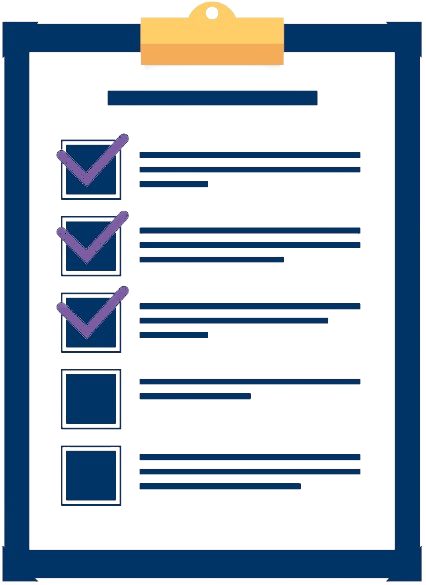Suggestions based on the Question and Answer that you are currently viewing
Using the IS/MP model analyse the possible effect of an increase in aggregate expenditure on output, the real interest rate and inflation.
] Compare and contrast how bad debt expense is determined for financial accounting purposes and how the deduction for bad debts is determined for accrual-method taxpayers. How do cash-method taxpayers determine their bad debt expense for accounts receivable?
: If Henry is passed over for promotion, what feedback and advice should he be given about how to improve his management skills for possible future promotions?
Cliff’s basis in his Aero Partnership interest is $11,000. Cliff receives a distribution of $22,000 cash from Aero in complete liquidation of his interest. Aero is an equal partnership with the following balance sheet: Assets: Tax Basis FMV Cash $ 22,000 $ 22,000 Investment 8,800 8,800 Land 2,200 35,200 Totals $ 33,000 $ 66,000 Liabilities and capital: Capital- Chris 11,000 - Cliff 11,000 - Cooper 11,000 Totals $ 33,000 a. What are the amount and character of Cliff’s recognized gain or loss? What is the effect on the partnership assets? b. If Aero has a §754 election in place, what is the amount of the special basis adjustment?
Explain what a favourable variance and an unfavourable variance mean in relation to revenue and costs.
A 1/2-13 screw is to be preloaded to a tension force = 1000 lb. Torque coefficient = 0.22. Determine the torque that should be used to tighten the bolt.
Larry purchased an annuity from an insurance company that promises to pay him $1,500 per month for the rest of his life. Larry paid $170,820 for the annuity. Larry is in good health and is 72 years old. Larry received the first annuity payment of $1,500 this month. Use the expected number of payments in Exhibit 5-1 for this problem.
What two assumptions are central to the IASB conceptual framework?
What is a programmable logic controller?
{Research} This week Jim’s residence was heavily damaged by a storm system that spread destruction throughout the region. While Jim’s property insurance covers some of the damage, there is a significant amount of uninsured loss. The governor of Jim’s state has requested that the president declare the region a federal disaster area and provide federal disaster assistance. Explain to Jim the income tax implications of such a declaration and any associated tax planning possibilities.
The yield of good chips during a certain step in silicon processing of integrated circuits averages 91%. The number of chips per wafer is 200. Determine the center, LCL, and UCL for the p chart that might be used for this process.
Some of the information found on a detail inventory card for Slatkin Inc. for the first month of operations is as follows. Received Issued, Balance, Date No. of Units Unit Cost No. of Units No. of Units January 2 1,200 $3.00 1,200 7 700 500 10 600 3.20 1,100 13 500 600 18 1,000 3.30 300 1,300 20 1,100 200 23 1,300 3.40 1,500 26 800 700 28 1,600 3.50 2,300 31 1,300 1,000 Instructions (a) From these data compute the ending inventory on each of the following bases. Assume that perpetual inventory records are kept in units only. (Carry unit costs to the nearest cent and ending inventory to the nearest dollar.) (1) First-in, first-out (FIFO). (2) Last-in, first-out (LIFO). (3) Average-cost. (b) If the perpetual inventory record is kept in dollars, and costs are computed at the time of each withdrawal, would the amounts shown as ending inventory in (1), (2), and (3) above be the same? Explain and compute. (Round average unit costs to four decimal places.)
What is the purpose of a tombstone that is used with a horizontal machining center (HMC)? What is the purpose of a tombstone that is used with a horizontal machining center (HMC)?
Emily purchased a building to store inventory for her business. The purchase price was $760,000. Emily also paid legal fees of $300 to acquire the building. In March, Emily incurred $2,000 to repair minor leaks in the roof (from storm damage earlier in the month) and $5,000 to make the interior suitable for her finished goods. What is Emily’s cost basis in the new building?
Presented below is information related to LeBron James Manufacturing Corporation. Asset Cost Estimated Salvage Estimated Life (in years) A $40,500 $5,500 10 B 33,600 4,800 9 C 36,000 3,600 9 D 19,000 1,500 7 E 23,500 2,500 6 Instructions (a) Compute the rate of depreciation per year to be applied to the plant assets under the composite method. (b) Prepare the adjusting entry necessary at the end of the year to record depreciation for the year. (c) Prepare the entry to record the sale of asset D for cash of $4,800. It was used for 6 years, and depreciation was entered under the composite method.
A welding heat source is capable of transferring 150 Btu/min to the surface of a metal part. The heated area is approximately circular, and the heat intensity decreases with increasing radius as follows: 50% of the power is transferred within a circle of diameter = 0.1 inch and 75% is transferred within a concentric circle of diameter = 0.25 in. What are the power densities in (a) the 0.1-inch diameter inner circle and (b) the 0.25-inch diameter ring that lies around the inner circle? (c) Are these power densities sufficient for melting metal?
1. : Studies of women leaders suggest that many of them view power differently than men do and prefer a collaborative, relationship-oriented use of power. If this is the case, what does it suggest about women leaders’ abilities to accomplish goals? What does it suggest about women’s ability to rise to higher organizational levels? Discuss.
How is compensation expense computed using the fair value approach?
What are the three steps in the LIGA process?
1. How much would be the total tax revenue for the government? 2. Will the individual producers gain from the export tax?
Eddie Zambrano Corporation began operations on January 1, 2011. During its first 3 years of operations, Zambrano reported net income and declared dividends as follows. Net Income Dividends Declared 2011 $ 40,000 $ –0– 2012 125,000 50,000 2013 160,000 50,000 The following information relates to 2014. Income before income tax $240,000 Prior period adjustment: understatement of 2012 depreciation expense (before taxes) $ 25,000 Cumulative decrease in income from change in inventory methods (before taxes) $ 35,000 Dividends declared (of this amount, $25,000 will be paid on Jan. 15, 2015) $100,000 Effective tax rate 40% Instructions (a) Prepare a 2014 retained earnings statement for Eddie Zambrano Corporation. (b) Assume Eddie Zambrano Corp. restricted retained earnings in the amount of $70,000 on December 31, 2014. After this action, what would Zambrano report as total retained earnings in its December 31, 2014, balance sheet?
Describe the RP technology called solid ground curing.
Think of two things that are provided free of charge. In each case, identify whether and in what form a shortage might occur. In what ways are/could these shortages be dealt with? Are they the best solution to the shortages?
Describe a put option on interest rate futures. How does it differ from selling a futures contract? (LO6)
Suppose in the previous problem that a roll spot-welding operation is performed instead of seam welding. The interface resistance increases to 100 micro-ohms, and the center-to-center separation between weld nuggets is 25 mm. Given the conditions from the previous problem, with the changes noted here, determine (a) the proportion of energy generated that goes into the formation of each weld nugget, and (b) the rotational speed of the electrode wheels. (c) At this higher rotational speed, how much does the wheel move during the current on-time, and might this have the effect of elongating the weld nugget (making it elliptical rather than round)?
The benefits of buying with AnswerDone:

Access to High-Quality Documents
Our platform features a wide range of meticulously curated documents, from solved assignments and research papers to detailed study guides. Each document is reviewed to ensure it meets our high standards, giving you access to reliable and high-quality resources.

Easy and Secure Transactions
We prioritize your security. Our platform uses advanced encryption technology to protect your personal and financial information. Buying with AnswerDone means you can make transactions with confidence, knowing that your data is secure

Instant Access
Once you make a purchase, you’ll have immediate access to your documents. No waiting periods or delays—just instant delivery of the resources you need to succeed.
